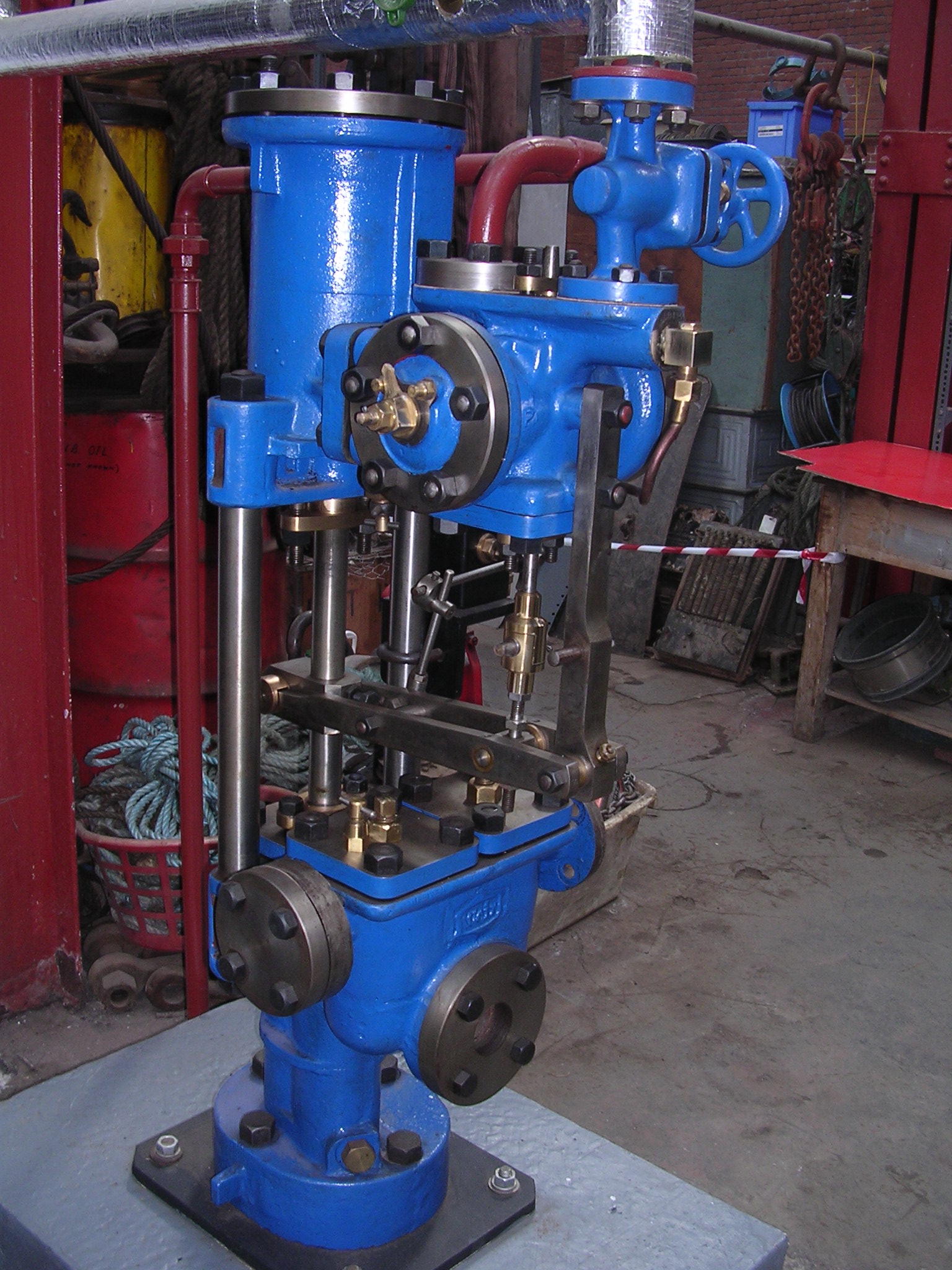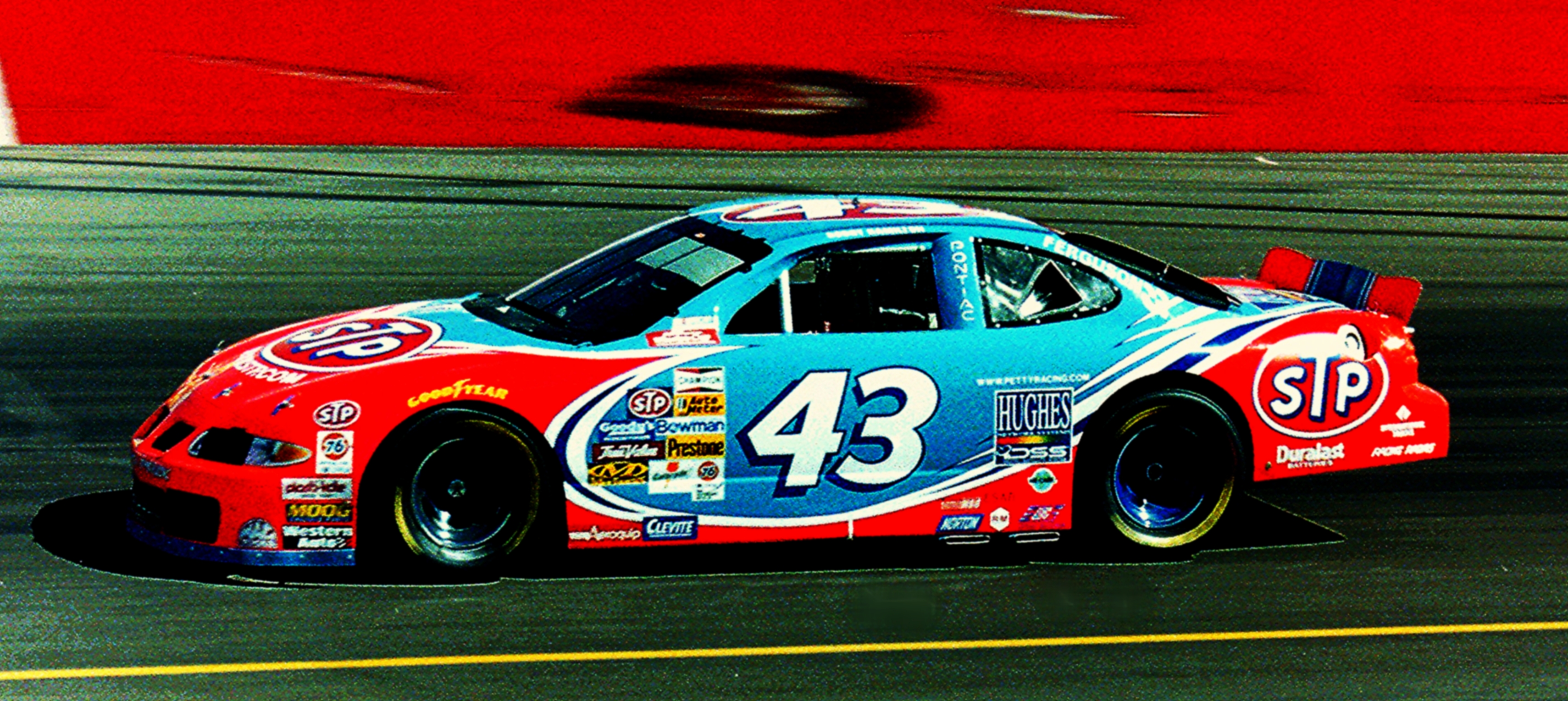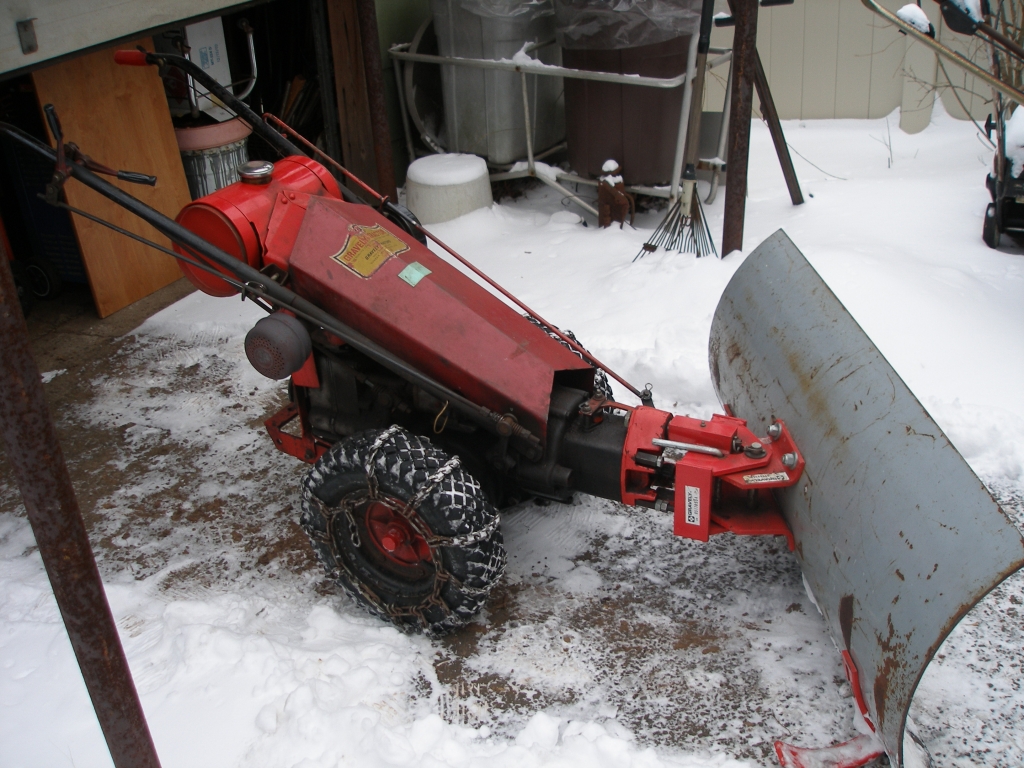|
Studebaker-Worthington
Studebaker-Worthington was a diversified American manufacturer created in 1967 through a merger of Studebaker-Packard Corporation, Wagner Electric and Worthington Corporation. The company was in turn acquired by McGraw-Edison in 1979. Origins Founded in 1852, Studebaker began as a wagon manufacturer which eventually entered the automobile business in the early 1900s. However, since the early 1950s sales had been steadily declining resulting in a lack of funds to develop new models. In December 1963 Randolph H. Guthrie, chairman of Studebaker, announced that the company was closing down its automobile factory in South Bend Indiana, where it had made cars for 50 years, but would continue to make cars in Hamilton, Ontario. In 1965 auto sales were slightly less than $45 million. On 4 March 1966 Studebaker announced the termination of auto production after less than 9,000 1966 models had been produced. Management said the decision was due to "heavy and irreversible losses" in the ... [...More Info...] [...Related Items...] OR: [Wikipedia] [Google] [Baidu] |
Derald Ruttenberg
Derald H. Ruttenberg (17 February 1916 – 19 September 2004) was a lawyer who became a deal maker, organizing large industrial mergers. He arranged the merger of Studebaker and Worthington Corporation, and for some time ran the combined Studebaker-Worthington. He provided the financing for the Derald H. Ruttenberg Cancer Center at Mount Sinai Hospital, New York. Early years He was born on 17 February 1916 in Lafayette, Indiana. He studied philosophy at the University of Wisconsin, graduating in 1937. He went on to the Yale Law School where he earned an LL.B in 1940, then earned a business degree from the Harvard University Graduate School of Business in 1942. He served in the U.S. Air Force during World War II (1939–1945) and served in Europe in the U.S. Strategic Bombing Survey. He received an honorable discharge as a lieutenant in 1945. Early career After being discharged, he practiced law in Chicago. He then became owner of a number of privately held industrial com ... [...More Info...] [...Related Items...] OR: [Wikipedia] [Google] [Baidu] |
Studebaker
Studebaker was an American wagon and automobile manufacturer based in South Bend, Indiana, with a building at 1600 Broadway, Times Square, Midtown Manhattan, New York City. Founded in 1852 and incorporated in 1868 as the Studebaker Brothers Manufacturing Company, the firm was originally a coachbuilder, manufacturing wagons, buggies, carriages and harnesses. Studebaker entered the automotive business in 1902 with electric vehicles and in 1904 with gasoline vehicles, all sold under the name "Studebaker Automobile Company". Until 1911, its automotive division operated in partnership with the Garford Company of Elyria, Ohio, and after 1909 with the E-M-F Company and with the Flanders Automobile Company. The first gasoline automobiles to be fully manufactured by Studebaker were marketed in August 1912. Over the next 50 years, the company established a reputation for quality, durability and reliability. After an unsuccessful 1954 merger with Packard (the Studebaker-Packard Corp ... [...More Info...] [...Related Items...] OR: [Wikipedia] [Google] [Baidu] |
Worthington Corporation
The Worthington Corporation was a diversified American manufacturer that had its roots in Worthington and Baker, a steam pump manufacturer founded in 1845. In 1967 it merged with Studebaker and Wagner Electric to form Studebaker-Worthington. This company was in turn acquired by McGraw-Edison in 1979. Worthington Pump Works (1845–1899) Worthington and Baker, manufacturers of hydraulic machinery such as steam pumps and meters, was founded by Henry R Worthington and William H. Baker. Worthington was the inventor of the direct acting steam pump. The first foundry was near the Brooklyn Navy Yard. In 1854 the partners moved to Van Brunt Street in Brooklyn. The partnership was dissolved around 1860 when Baker died. A new partnership called Henry R. Worthington, or Worthington Hydraulic Pump Works, was formed in 1862. The United States Navy used Worthington pumps to pump: boiler feed water, bilge water, fire fighting, and general services (https://www.asme.org/about-asme/enginee ... [...More Info...] [...Related Items...] OR: [Wikipedia] [Google] [Baidu] |
Wagner Electric
Wagner Electric Corporation was an electric equipment manufacturing firm established in 1891 that became part of Studebaker-Worthington in 1967. History Wagner Electric Corporation was founded by Herbert Appleton Wagner and Ferdinand Schwedtmann (aka Francis Charles Schwedtman) in 1891. The company manufactured electric engines, electric motors and electric starters for early automobiles. They also made electric lights and many other electric-related products. In 1909, Wagner Electric started manufacturing their first automotive headlamp bulbs. The International Association of Machinists held a strike at the Wagner Electric Company in St. Louis, Missouri from June 4 to October 7, 1918. Before it became part of a conglomerate, Wagner had three main divisions. It had the automotive division where it made brake parts and systems for autos and trucks. It had the motor division which made small and large electric motors and it had the transformer division where it manufactured ... [...More Info...] [...Related Items...] OR: [Wikipedia] [Google] [Baidu] |
McGraw-Edison
McGraw-Edison was an American manufacturer of electrical equipment. It was created in 1957 through a merger of McGraw Electric and Thomas A. Edison, Inc., and was in turn acquired by Cooper Industries in 1985. Today, the McGraw-Edison brand is used on industrial, commercial, and institutional lighting products, and is now owned by the Pennsylvania Transformer Technologies Inc. Company as of being acquired in 1996. Origins McGraw Electric was founded by Max McGraw in Sioux City, Iowa in 1900, in the business of installing electricity in houses. The founder was aged 17 at the time. The company quickly expanded into industrial and commercial buildings. It made several acquisitions over the years, evolving into a manufacturer of electrical products. In 1952 McGraw Electric and the Pennsylvania Transformer Company merged, keeping the name of McGraw Electric. Thomas A. Edison, Inc. was formed in 1910 as a reorganization of the Edison Manufacturing Co., which had its roots in the 19th ... [...More Info...] [...Related Items...] OR: [Wikipedia] [Google] [Baidu] |
Studebaker-Packard Corporation
The Studebaker-Packard Corporation was the entity created in 1954 by the purchase of the Studebaker Corporation of South Bend, Indiana, by the Packard Motor Car Company of Detroit, Michigan. While Studebaker was the larger of the two companies, Packard's balance sheet and executive team were stronger than that of the South Bend company. In the spring of 1962, Studebaker-Packard reverted its name to "Studebaker Corporation". The following year, the South Bend plant was closed, while its Canadian plant in Hamilton, Ontario, continued to produce Studebaker cars until 1966. The South Bend plant would later be acquired by the Avanti Motor Company. Studebaker Corp. merged with Worthington Corporation one year later. Studebaker-Worthington was a diversified American manufacturer operating the various business units of Studebaker, Wagner Electric and Worthington Corporation. The company was in turn acquired by McGraw-Edison in 1979. Purposes of merger It was hoped that Packard would be ... [...More Info...] [...Related Items...] OR: [Wikipedia] [Google] [Baidu] |
Weir Group
The Weir Group plc is a Scottish multinational engineering company headquartered in Glasgow, Scotland. It is listed on the London Stock Exchange and is a constituent of the FTSE 100 Index. History The company was established in 1871 as an engineering firm by two brothers, George and James Weir, founding G. & J. Weir Ltd. The Weir brothers produced numerous groundbreaking inventions in pumping equipment, primarily for the Clyde shipyards and the steam ships built there. These pumps became extremely well known for their use as boiler feedwater pumps, and for ship's auxiliary equipment such as evaporators. Under W D Weir, the company turned to producing munitions and war materiel in the First World War. As well as shells, they manufactured aircraft including the Royal Aircraft Factory F.E.2 fighter and bomber. James George Weir (aviator, son of James Galloway Weir) a director of the company formed the Cierva Autogiro Company. G & J Weir would be a financial supporter of th ... [...More Info...] [...Related Items...] OR: [Wikipedia] [Google] [Baidu] |
Montreal Locomotive Works
Montreal Locomotive Works (MLW) was a Canadian railway locomotive manufacturer which existed under several names from 1883 to 1985, producing both steam and diesel locomotives. For a number of years it was a subsidiary of the American Locomotive Company. MLW's headquarters and manufacturing facilities were located in Montreal, Quebec. Early history The Locomotive and Machine Company of Montreal Limited was created in 1883, producing primarily for the growing domestic market—notably the Canadian Pacific Railway, the Grand Trunk Railway, the Intercolonial Railway and, after 1922, the Canadian National Railway. Purchase by Alco In 1901, the American Locomotive Company (Alco) headquartered in Schenectady, New York, was formed by the merger of several struggling locomotive manufacturers. Alco purchased the Locomotive & Machine Company of Montreal in 1904 to tap into the Canadian market with its emerging designs. The Montreal subsidiary was renamed Montreal Locomotive Wor ... [...More Info...] [...Related Items...] OR: [Wikipedia] [Google] [Baidu] |
STP Corporation
STP is an American brand of automotive aftermarket products, especially lubricants such as motor oil and motor oil additives. The name began as an abbreviation of ''Scientifically Treated Petroleum''. The brand has been owned by Energizer Holdings since November 2018. History Chemical Compounds was founded in 1953 by three businessmen, Charles Dwight (Doc) Liggett, Jim Hill and Robert De Hart, with $3,000 in start-up capital in Saint Joseph, Missouri. Their sole product was STP Oil Treatment; the name was derived from “Scientifically Treated Petroleum”. In 1961, the company was acquired by the Studebaker-Packard Corporation. Studebaker briefly tied STP into its advertising as an abbreviation for “Studebaker Tested Products”. However, Studebaker-Packard CEO Sherwood Egbert felt that STP could one day outpace its parent company and recruited Andy Granatelli as the CEO of STP to help raise the product’s image. At the same time, Granatelli became the public face of ... [...More Info...] [...Related Items...] OR: [Wikipedia] [Google] [Baidu] |
Alco
The American Locomotive Company (often shortened to ALCO, ALCo or Alco) was an American manufacturer of locomotives, diesel generators, steel, and tanks that operated from 1901 to 1969. The company was formed by the merger of seven smaller locomotive manufacturers and Schenectady Locomotive Engine Manufactory of Schenectady, New York. A subsidiary, American Locomotive Automobile Company, designed and manufactured automobiles under the Alco brand from 1905 to 1913. ALCO also produced nuclear reactors from 1954 to 1962. The company changed its name to Alco Products, Incorporated in 1955. In 1964, the Worthington Corporation acquired the company. The company went out of business in 1969. The ALCO name is currently being used by Fairbanks Morse Engine for their FM, ALCO line. Foundation and early history The company was created in 1901 from the merger of seven smaller locomotive manufacturers with Schenectady Locomotive Engine Manufactory of Schenectady, New York: * Brooks Loco ... [...More Info...] [...Related Items...] OR: [Wikipedia] [Google] [Baidu] |
Gravely Tractor
Gravely, of Brillion, Wisconsin, is a manufacturer of powered lawn and garden implements which it describes as "walk-behind, zero turn and outfront mowers". It started as a manufacturer of "walk-behind" or two-wheel tractors. History Foundation Benjamin Franklin Gravely (29 November 1876 – January 1953) of Dunbar, West Virginia, manufactured in 1916 a hand-pushed plow fitted with an auxiliary Indian motorcycle engine and driven by belts.The Gravely Story Official historical document, with illustrations (date unspecified) His goal was to build a tractor which would revolutionize gardening and lawn maintenance for the homeowner. F. W. Wilcox, a friend of Gravely, owned a machine shop in |
Fedders
Fedders is an American company that manufactures air conditioners and other air treatment products. Founded by Theodore Fedders in 1896, Fedders is headquartered in the Basking Ridge section of Bernards Township in Somerset County, New Jersey, United States. Fedders was founded in 1896 by Theodore Fedder as a producer of milk cans, bread pans and kerosene tanks. The company began manufacturing room air conditioners in 1946. Fedders purchased Airtemp from Chrysler in 1976. Fedders also purchased the General Electric room air conditioner and rotary compressor plant in Columbia, Tennessee Tennessee ( , ), officially the State of Tennessee, is a landlocked U.S. state, state in the Southeastern United States, Southeastern region of the United States. Tennessee is the List of U.S. states and territories by area, 36th-largest by ... in 1987. Fedders Quigan Corp. an American company owns the Fedders trademark in the United States. References External links * Heating, ... [...More Info...] [...Related Items...] OR: [Wikipedia] [Google] [Baidu] |


.png)




